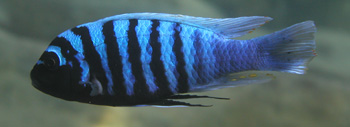
 |
Carleton lab research |
||||
| Research | People | Publications | Protocols | Links | |
Phototransduction occurs when visual pigments absorb light and then start a biochemical chain reaction which results in a neural output from the rod or cone cells. These two cell types are optimized for different light regions. Rod are fine tuned to work at low light levels and can operate as single photon detectors, though they respond and recover slowly. Cones are optimized to work under bright light conditions, and essentially never saturate. They respond and recover quickly. In a typical duplex vertebrate retina, there are corresponding phototransduction proteins which are unique to either the rod and cone cells. Using comparative genomic approaches, we hope to understand what distinguishes rod and cone phototransduction.
Our first studies have looked at opsin genes. Very early in the evolution of vertebrates, before the divergence of fishes and tetrapods, five classes of opsins arose. One is found exclusively in the rod cells (RH1). The other four are found in cones and are distinguished by the range of their spectral sensitivities. There are very short wavelength sensitive (SWS1), short wavelength sensitive (SWS2), rhodopsin like medium sensitive (RH2) and long wavelength sensitive (LWS).
 |
 |
| Using all the 188 available DNA opsin sequences for vertebrate opsin genes, we identified the conserved amino acid sites for each of the opsin classes. Comparisons of all of the classes identified 38 sites which were invariant in all vertebrate retinal opsins. This includes the lysine which binds retinal, the counter ion, as well as a number of sites in the cytoplasmic loops. The sites are color coded by region: TM (green), extracellular loop (yellow), cytoplasmic loop (purple), N or C terminus (white). When the combined cone opsin classes were compared to RH1, we found no sites which were conserved in all cone classes which were distinct from conserved sites in the RH1 class. This suggests that rod and cone opsins will interact similarly with other proteins during activation and inactivation of phototransduction. |  |
 |
However, there were sites which distinguished individual cone opsin classes when they were compared separately to the RH1 class. These class specific sites are primarily in the transmembrane region with many directed into the retinal binding pocket. Those cone opsin classes which are most spectrally distinct have the most of these class specific sites. The LWS class had 30 while the SWS1 class had 14. The RH2 class had only one class specific site. Its spectral range is nearly identical to that of the RH1 class. The SWS2 class had only 4 class specific sites and it also is close in sensitivity to RH1. These sites are likely spectral tuning sites that confer the large scale differences in sensitivities between these major opsin classes. |
| This work is a collaboration with Rick Cote, UNH, and is published in Journal of Molecular Evolution (Carleton et al JME 61: 75-89). We hope to use this method to compare other phototransduction proteins to identify those with a likely role in distinguishing rod and cone phototransduction. |  |